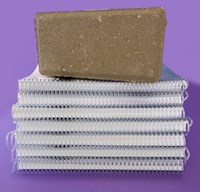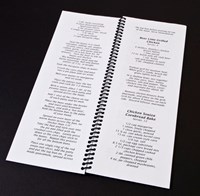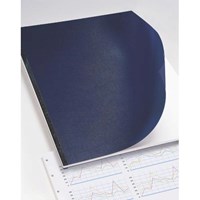The binding world uses some strange jargon. What does lay-flat or bounce-back memory really mean? Did you know 360-degree rotation refers to spine rotation? Let’s decode the four essential binding terms to inform your binding decision.
360-Degree Rotation

Picture a magazine that’s held together by staples. Now think about how you can fold it over so that the front and back covers touch. That’s what 360-degree rotation means for a bound document.
360-degree rotation is useful for situations where conserving space is important and when you need to make frequent copies of your bound document.
Bounce-Back Memory

Bounce-back memory allows a spine to be crushed and still retain its original shape, even after great force.
Need to mail documents frequently? Creating documents that are referenced often? You should file coil binding with bounce-back in your memory.
Lay-Flat Capability

When you open a book on a tabletop or desk and the pages remain 100% flat, that’s lay-flat capability.
This feature is especially useful for notetaking and photocopying. It allows you to keep both hands free for other tasks. Several binding styles offer this capability, including Coil binding, ProClick binding and Comb binding.
Permanent Binding

With some bound documents, you want to replace pages over time. Others, you want locked in long-term. That’s where permanent binding comes in. Permanent spines can be a great choice if you’re looking for a tamper-resistant option.
Permanent binding is a strong choice for documents that are confidential or need to be secure from additions and/or deletions, like legal documents.
Pitch

Pitch relates to the number of loops a spine has per inch. The term is frequently used with WireBind and CoilBind spines. For example, a 2:1 pitch creates two loops per inch. A 3:1 pitch means three loops per inch.
Now that you know some key terms, you can confidently explore the binding solutions we offer.
